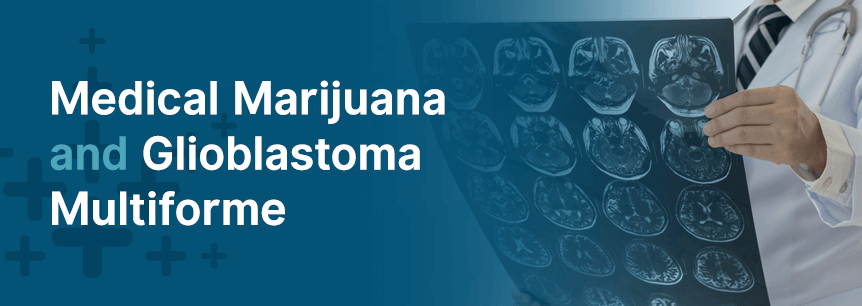
If you’ve heard marijuana can treat brain cancer like glioblastoma multiforme (GBM), your first reaction might be disbelief. However, researchers have been studying the tumor-killing properties of two of the plant’s primary cannabinoids — THC and CBD — and the research looks promising. Not only that, but medical marijuana and glioblastoma multiforme can also provide you relief from an array of its symptoms, like headaches, nausea, anxiety and depression.
Glioblastoma multiforme, or glioblastoma for short, is an extremely aggressive brain tumor. It’s among the group of tumors known as astrocytomas. Glioblastomas account for around 12 to 15 percent of individuals with brain tumors.
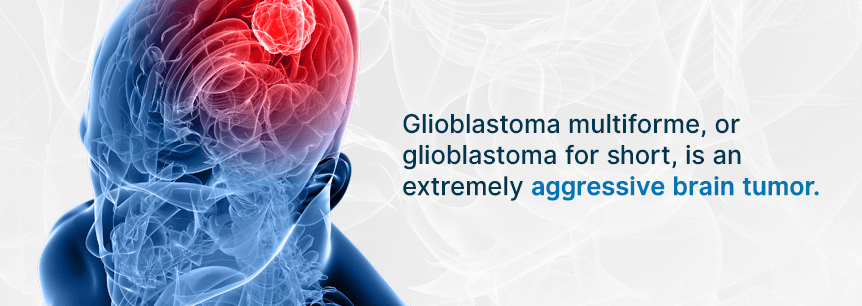
The tumors start in star-shaped cells called astrocytes that support and nourish your brain’s neurons. GBM can also contain various other types of brain cells, even your dead brain cells.
GBM tumors grow fast inside your brain, with their cells multiplying rapidly. They also have many blood vessels to feed them. While they are a type of brain tumor, GBMs can spread to other areas of your body.
GBMs present special challenges for treatment due to certain characteristics such as:
Since GBDs proliferate so fast, brain pressure typically causes the initial symptoms. Depending on the location of the tumor, it can cause:
Many conditions other than GBM can cause these symptoms. You’ll need to consult with your doctor to receive an accurate diagnosis.
While researchers have identified some risk factors for brain tumors, there’s no known cause for most of the tumors. You can control to some degree certain risk factors, such as radiation exposure, while others — like your family history and age — you can’t.
Radiation exposure is one significant risk factor for brain tumors and glioblastomas. It occurs when doctors use radiation to treat another condition. Many brain tumor patients who require radiation therapy for treating other cancers have a higher risk.
Children with scalp ringworm went through low-dose radiation treatments before doctors knew the risks. Sadly, doctors later found this radiation increased their risk of tumors in the brain as they got older. At that point, it was too late, since the doctors couldn’t undo the effects of the radiation. Many children who had their brains exposed to radiation for treating leukemia ended up with brain tumors around 10 to 15 years later.
Tumors due to radiation are not common, but doctors are now weighing the benefits and risks considerably before they use radiation therapy. Radiation exposure from CT scans or X-rays is a lot smaller than radiotherapy, making the brain tumor risk insignificant.
According to the American Cancer Society, you can’t prevent glioblastomas. And, there aren’t any known environmental or lifestyle-related causes of brain tumors other than radiation exposure. Therefore, currently, there isn’t an established way of protecting against GBMs.
There are a couple of types of GBMs.
GBMs often grow in the temporal and frontal lobes of the brain. You can also find them in the cerebellum, brain stem, spinal cord and other parts of the brain.
Complications of GBMs include:
Other common complications include:
Individuals who have primary brain tumors can have a poor quality of life, according to Neuro-Oncology. Symptoms like nausea, anorexia, insomnia, headache and seizures cause them difficulties. They also deal with other problems, like personality changes, motor deficits, visual field defects, cognitive deficits and aphasia.
Even though there are many of these challenges, there aren’t that many well-tested interventions for improving quality of life.
Many glioblastoma multiforme patients experience anxiety and depression. A study of 363 adult neuro-oncology patients showed out of those with a glioblastoma multiforme diagnosis, 48 percent had an anxiety disorder, 41 percent had depression and only 5 percent carried a previous psychiatric illness diagnosis.
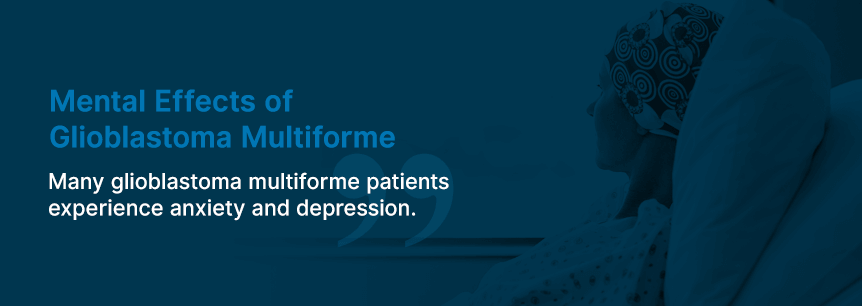
Another study showed depression, anxiety and cognitive impairment increased in patients with brain tumors following surgery. However, quality of life didn’t change.
According to the American Association of Neurological Surgeons:
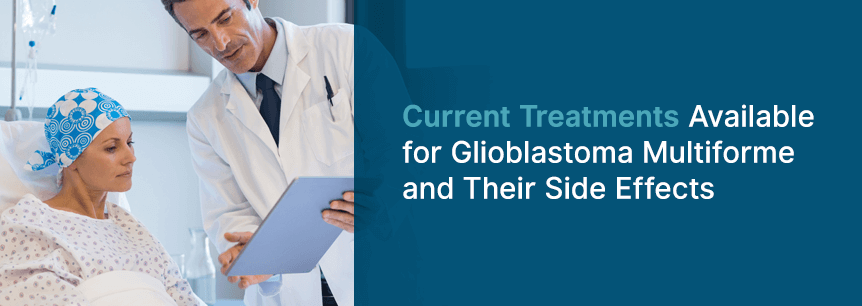
Here are the most common treatments for GBM.
There are two primary experimental approaches to develop better glioblastoma treatments.
Researchers have conducted or are performing around 1,284 studies for the treatment of GBM.
The CB1 and CB2 cannabinoid receptor agonist, THC, acts as a broad range inhibitor of cancer in vivo and in culture. Clinical trials are presently testing its effectiveness for treating glioblastoma. Studies suggest other cannabinoids, which don’t efficiently interact with these receptors, can regulate THC’s actions.
THC has a fair safety profile and takes antiproliferative action on tumor cells. THC and other cannabinoids hinder angiogenesis and tumor growth in animal models, according to a study. Because of this, researchers suggest their possible application as antitumoral drugs.
Marijuana could produce some side effects, including:
Marijuana and glioblastoma multiforme treatment can help with GBM symptoms such as:
Individuals who palliatively use medical marijuana for glioblastoma multiforme are usually looking to help alleviate their symptoms, including lack of appetite, headaches, gastrointestinal issues, nausea, vomiting, insomnia and anxiety. They often find the treatment to be most effective when they smoke or vape cannabis oil.
Other people use cannabis oil hoping it will kill cancer cells, since there’s evidence cannabinoids — combined with standard treatment — can increase chemotherapy’s effectiveness in mouse models.
Individuals taking THC feel a “high” sensation that could be acceptable for those looking to ease anxiety or insomnia. In contrast, CBD isn’t psychoactive, but also works well at relieving anxiety.
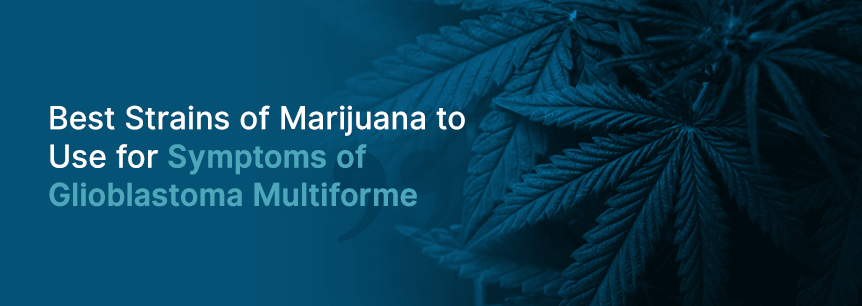
Medical weed has three main strain types:
Each of these marijuana for glioblastoma multiforme strains can help ease the symptoms of your GBM and improve your quality of life.
Some potentially beneficial strains to try are:
Strains for Nausea
Strains for Depression
Strains for Anxiety
Strains for Sleep
Strains for Headaches
Medical cannabis comes in various forms. A popular administration method is CBD oil. Patients often favor CBD oil because it provides them relief, but without the “high” effect, so they can continue with their everyday responsibilities.
CBD oil seems to work great for:
For fast relief, you can vape your CBD oil. With CBD vaping, you heat the oil, breathing in the vapors it produces. Smoking and vaping both deliver the quickest effects, but might not provide you with the best solution if you have any problems with your lungs.
Other methods of delivery include:
You don’t have to struggle with GBM symptoms like persistent headaches. As medical marijuana becomes legal in more and more states, you’ll find a growing number of dispensaries opening their doors to patients to fulfill their cannabis product needs. Since there are so many places to choose from, it can become a little overwhelming. Therefore, why not get all your cannabis needs fulfilled all under one roof?
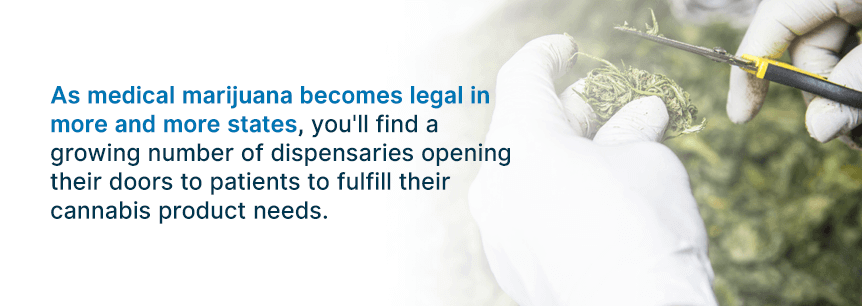
With Marijuana Doctors, you can find a qualified cannabis doctor and a considerable list of dispensaries, as well as information on state laws, products and more. Just click on “Find a Doctor” to begin your medical marijuana and glioblastoma multiforme treatment process.
Find A Doctor Find A Dispensary